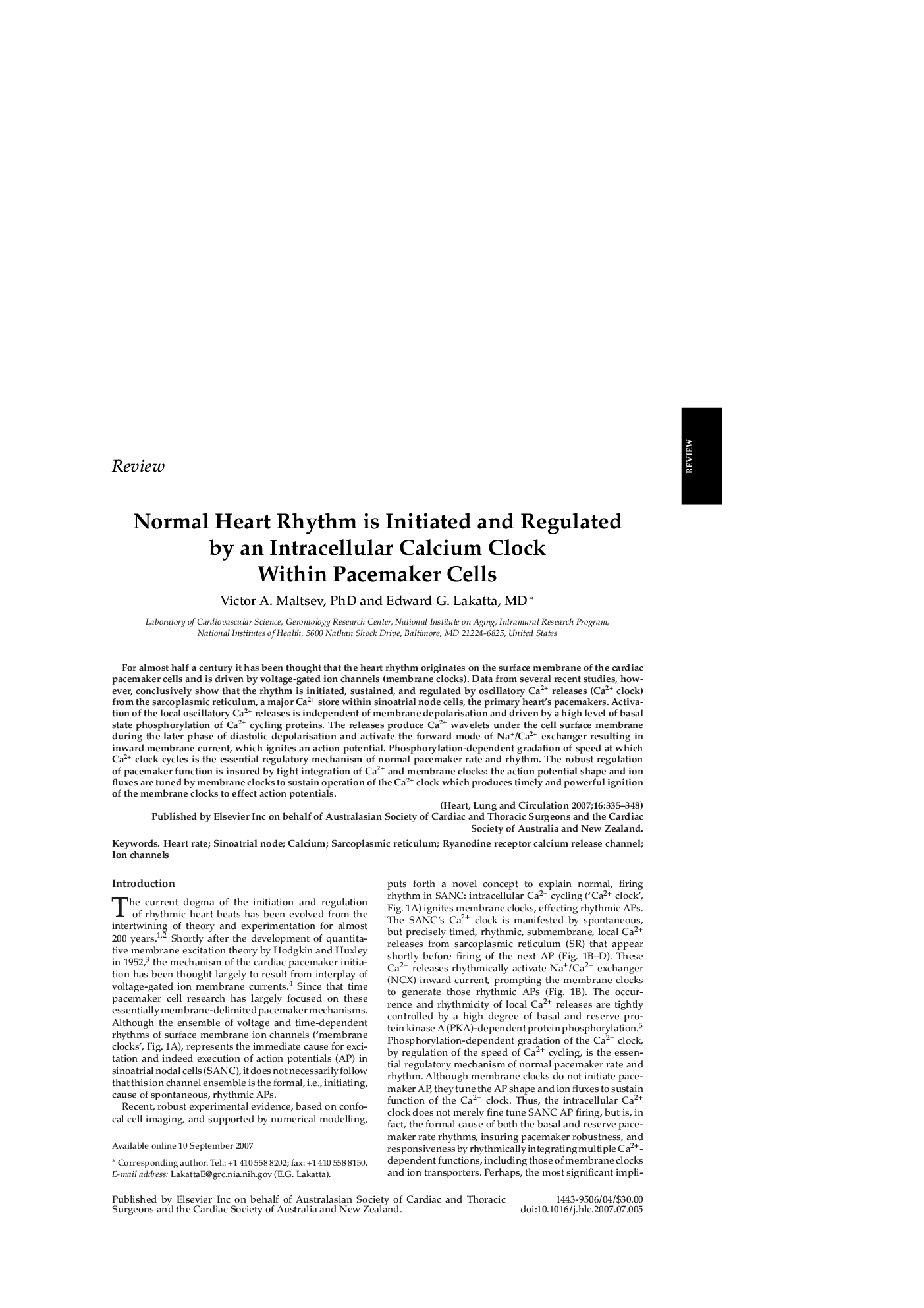| Article ID | Journal | Published Year | Pages | File Type |
|---|---|---|---|---|
| 2921430 | Heart, Lung and Circulation | 2007 | 14 Pages |
For almost half a century it has been thought that the heart rhythm originates on the surface membrane of the cardiac pacemaker cells and is driven by voltage-gated ion channels (membrane clocks). Data from several recent studies, however, conclusively show that the rhythm is initiated, sustained, and regulated by oscillatory Ca2+ releases (Ca2+ clock) from the sarcoplasmic reticulum, a major Ca2+ store within sinoatrial node cells, the primary heart's pacemakers. Activation of the local oscillatory Ca2+ releases is independent of membrane depolarisation and driven by a high level of basal state phosphorylation of Ca2+ cycling proteins. The releases produce Ca2+ wavelets under the cell surface membrane during the later phase of diastolic depolarisation and activate the forward mode of Na+/Ca2+ exchanger resulting in inward membrane current, which ignites an action potential. Phosphorylation-dependent gradation of speed at which Ca2+ clock cycles is the essential regulatory mechanism of normal pacemaker rate and rhythm. The robust regulation of pacemaker function is insured by tight integration of Ca2+ and membrane clocks: the action potential shape and ion fluxes are tuned by membrane clocks to sustain operation of the Ca2+ clock which produces timely and powerful ignition of the membrane clocks to effect action potentials.
